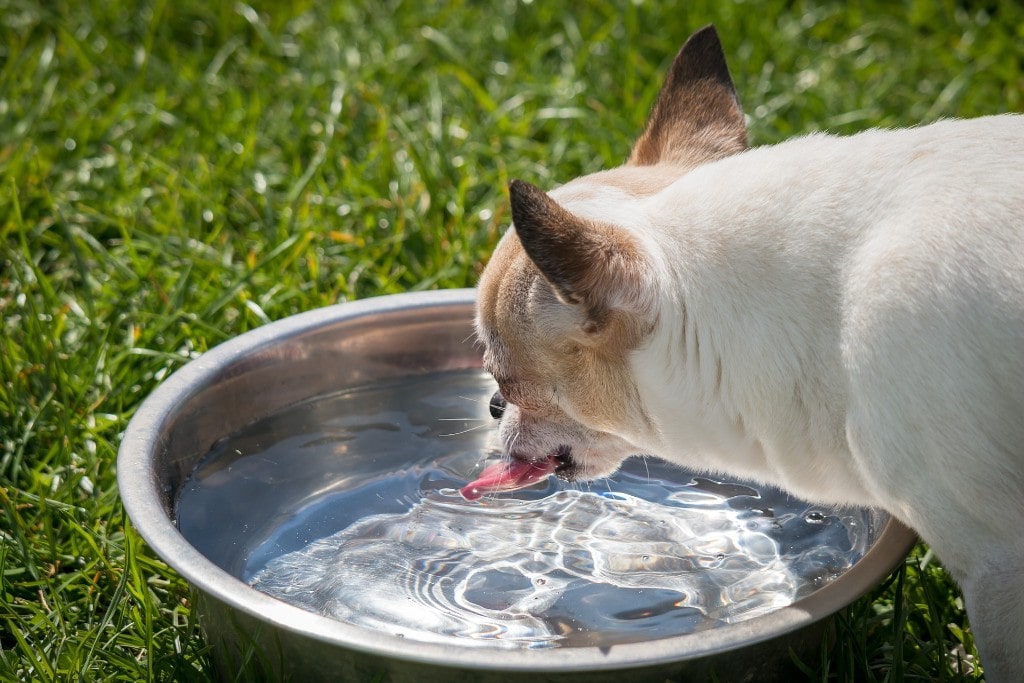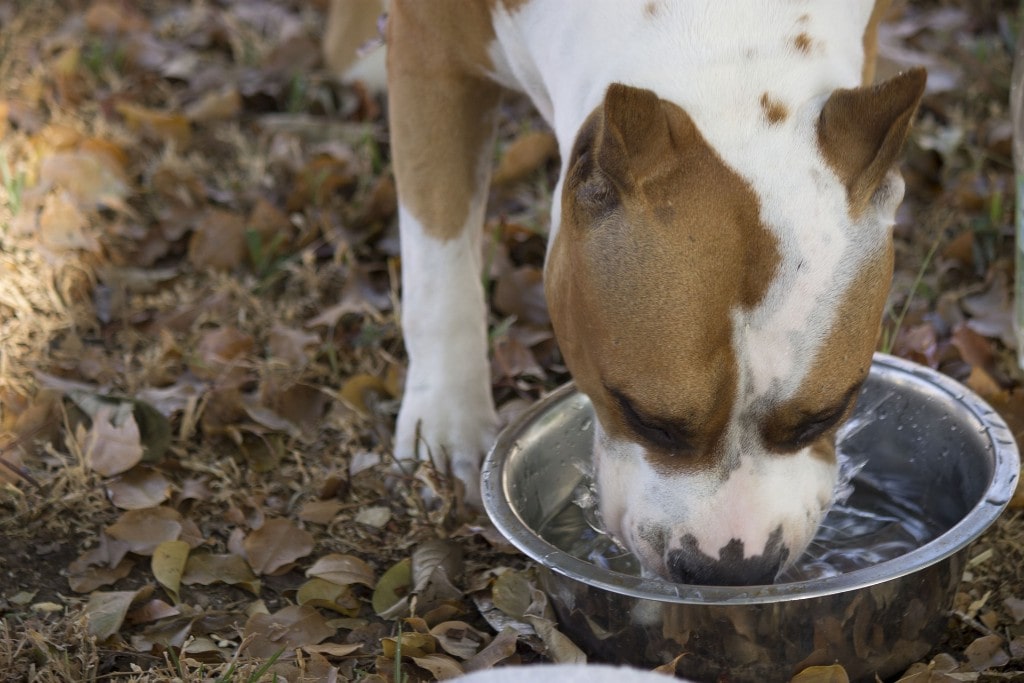Your dog is drinking a lot of water? Here are the probable causes

Dogs, like humans, drink to maintain the water they need in their body. A healthy dog will automatically drink what’s required to replace fluid lost in urination and through panting. An unexplained change in your pet’s thirst levels could be a symptom of a health problem. Being aware of the early warning sign of excessive drinking in dogs allows you to get a diagnosis at an earlier stage, this both improves treatment outcomes and of course spares your friend from discomfort that can be avoided.

How Much Water Should Your Dog Drink?
The guideline figure is around 20-70ml of water per kg of your dog’s weight per day. This is quite a wide range, some breeds naturally drink more than others. Environmental conditions, diet and activity levels will all affect how much a dog drinks. For this reason, it’s important to know what’s normal for your own dog.

Monitoring Your Dog’s Fluid Intake
You certainly don’t need to measure every dog of liquid your dog drinks. Make a habit of filling the water bowl a couple times a day, noticing how much the level has dropped. In this way, you’ll be aware of roughly how much your dog drinks and you’ll notice any significant change.

Harmless Explanations for Your Dog’s Thirst
Hot weather or a hot home; a long walk, or even a change of diet from wet food to dry could all cause your dog to drink more. It’s no big surprise if a five-mile hike results in a thirsty dog! Lactating females will drink up to three times more water than normal. It’s when you notice an increase in thirst for no explainable reason that it’s time to see the vet.

Medical Conditions that can Increase Thirst
Your vet will not be able to make any diagnosis over the phone and it’s likely that blood tests or other procedures will be needed to understand the cause of your dog’s polydipsia (this is the medical term for excessive drinking). If your dog is drinking a lot of water, some of the possible causes your vet will be checking for include:
Dogs can get diabetes just like people can and the cause is the same. Insufficient insulin production which leads to high blood sugar levels. Thirst levels increase as the body attempts to decrease the concentration of glucose in the blood.
Diabetes insipidus
Don’t be fooled by the similarity of name. This is a totally different disease from diabetes mellitus. It’s also far less common. In diabetes insipidus, the body loses its ability to retain water leading to excess urination. The high thirst is simply the body’s attempt to replace lost fluids.
Kidney disease
The kidneys filter toxins out of the bloodstream and if they’re not functioning correctly toxins and salts will build up, leading to increased thirst. Kidney disease or kidney failure can be acute or chronic. Acute forms can develop as a result of infection or after eating something toxic. Acute kidney failure can be life-threatening and requires emergency intervention. Chronic kidney disease is not uncommon in older dogs and is not generally curable, but can be managed, at least for some time, with diet and medication.
Cushing’s disease
Another condition that both humans and dogs can develop. It’s caused by an overproduction of the hormone cortisol, which in turn leads to an increase in blood sugar.
Hypercalcemia
An increase in blood calcium levels. As with sugar or toxins, when there’s too much calcium in the blood it triggers thirst.

Medication side effect
Quite a lot of different medications can cause an increase in thirst. If you notice this happening do tell your vet. It may be possible to lower the dose. And it may not. Sometimes it’s best to accept a relatively minor side-effect as this is less harmful to your pet than not getting the medicine required to manage a chronic condition.
If You Notice that Your Dog is Excessively Thirsty
A dog drinking a lot of water is giving you a clear sign that something’s not quite right. Don’t attempt to deal with the problem by limiting your friend’s access to water, that will simply make things worse. Do arrange a veterinary appointment as quickly you can. Many acute conditions that cause excessive thirst are emergencies but can be cured with prompt treatment.
In the case of an older dog, with a chronic condition, a cure may not be possible. And sadly there may come a time when the condition that causes your dog’s excessive thirst has other, more serious effects on him, If come to recognise that he is no longer able to enjoy the quality of life you want for him, talk to your vet about dog euthanasia at home, as the gentlest way to bring a life well lived to a peaceful end. This may be some way down the road however. In many cases, recognising a problem early will mean that there are treatment options that will keep your precious companion comfortable, happy and active for years to come.
Tags: Dog ageing, dog heart failureCloud 9
To ensure accuracy, a professional vet has reviewed and verified the information presented in this article. It is important to note that when it comes to making decisions about euthanasia for your pet, there are no easy answers. It is always recommended to seek advice from your own veterinarian before making any decision.



